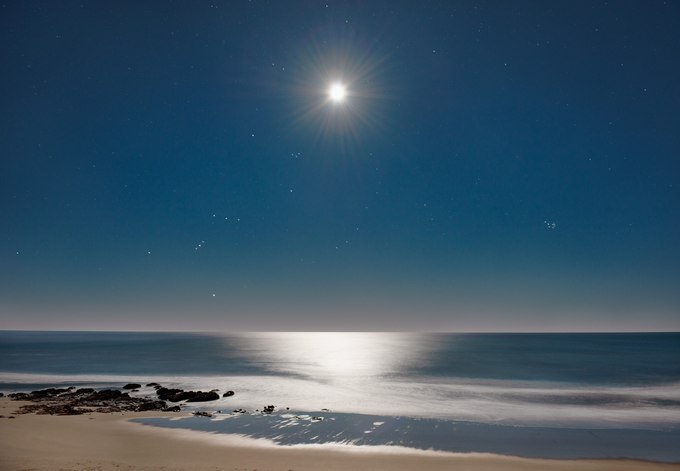Orion, the renowned hunter of Greek mythology, was first written about in the 8th century B.C. Though mortal, Orion was reputedly the son of the sea god Poseidon. A fateful story tells of his affection for Artemis, daughter of Zeus and Goddess of the Moon. However, Artemis' jealous twin brother Apollo tricked her into killing Orion. Apollo challenged Artemis – an expert archer – to aim for a head bobbing far out to sea, claiming the swimmer was evil. Her silver arrow split his head, but as the body washed ashore, she discovered it was, in fact, Orion. In grief and as a tribute, she lifted his body into the sky on her moon chariot to become a constellation.
By chance, this photograph combines the elements present in this myth: the shore, sea, moon, and the Orion constellation. Its configuration is visible in the western sky during autumn's twilight before sunrise. During this usually rainy season in Oregon, the air is remarkably clear; even the radiant moon does not dim the constellation's stars, with bright Sirius, representing Orion's dog trailing after him as he pursues the Seven Sisters, mythological nymphs symbolized by the star cluster Pleiades.
The constellation's alignment to the celestial equator and the shifting of its observed position due to the seasonal tilt of the earth's axis accounts for its prominence in both hemispheres. In the northern hemisphere, Orion comes into view near the horizon before daybreak beginning in September, then, during midwinter, appears overhead. Seasonally, the same is true for the southern hemisphere; as their winter corresponds to the northern hemisphere's summer months, Orion reaches its apex in the night sky south of the equator during June and July.
- James Baker

